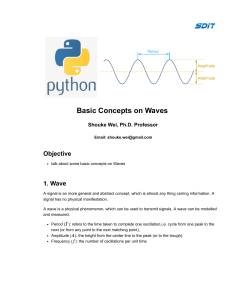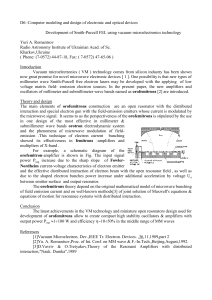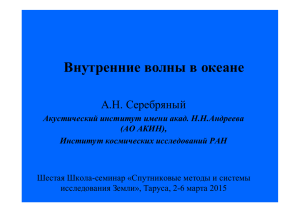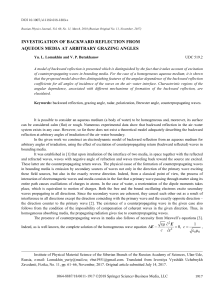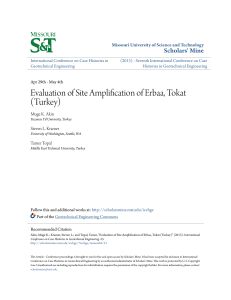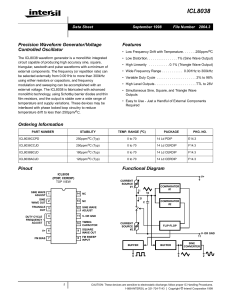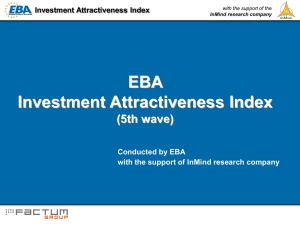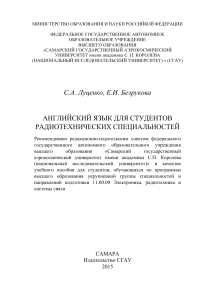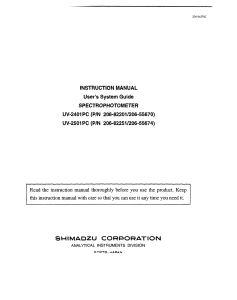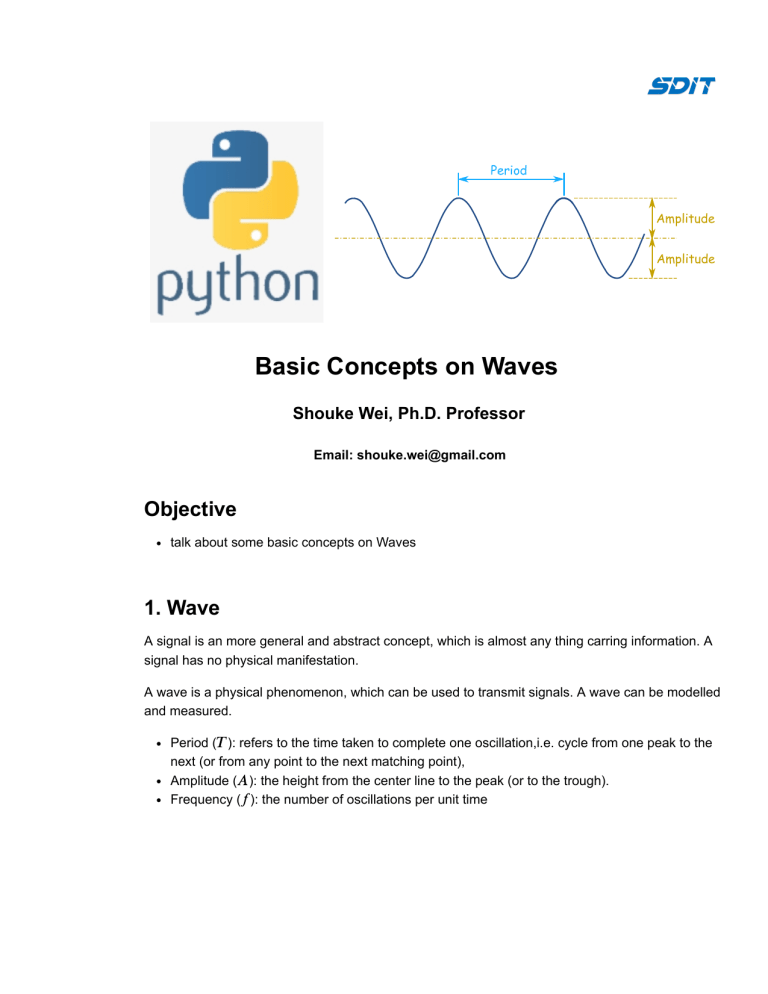
Period Amplitude Amplitude Basic Concepts on Waves Shouke Wei, Ph.D. Professor Email: shouke.wei@gmail.com Objective talk about some basic concepts on Waves 1. Wave A signal is an more general and abstract concept, which is almost any thing carring information. A signal has no physical manifestation. A wave is a physical phenomenon, which can be used to transmit signals. A wave can be modelled and measured. 𝑇 Period ( ): refers to the time taken to complete one oscillation,i.e. cycle from one peak to the next (or from any point to the next matching point), Amplitude ( ): the height from the center line to the peak (or to the trough). Frequency ( ): the number of oscillations per unit time 𝐴 𝑓 Period Amplitude Amplitude 2. Frequency and Period The relationship between frequency and period is: 𝑓 = 𝑇1 𝑇 = 𝑓1 The SI unit for frequency is the cycle per second, which is defined to be a hertz (Hz): 1 1𝐻𝑧 = 𝑐𝑦𝑐𝑙𝑒 = 𝑠𝑒𝑐 𝑠 3. Wavelength Besides, there is also another important concept called wavelength It is the distance over which a wave repeats, which can be defined as the distance between two successive crests or troughs of a wave. 𝑣𝑒𝑙𝑜𝑐𝑖𝑡𝑦 = 𝑉 𝜆 = 𝑓𝑟𝑒𝑞𝑢𝑒𝑛𝑐𝑦 𝑓 The higher the frequency, the shorter the wavelength, and the lower the frequency, the longer the wavelength. 4. Waveforms Waveform describes the shape or form of a wave signal. There are four basic types of waveforms: Sine wave Square wave Triangle wave Sawtooth wave
